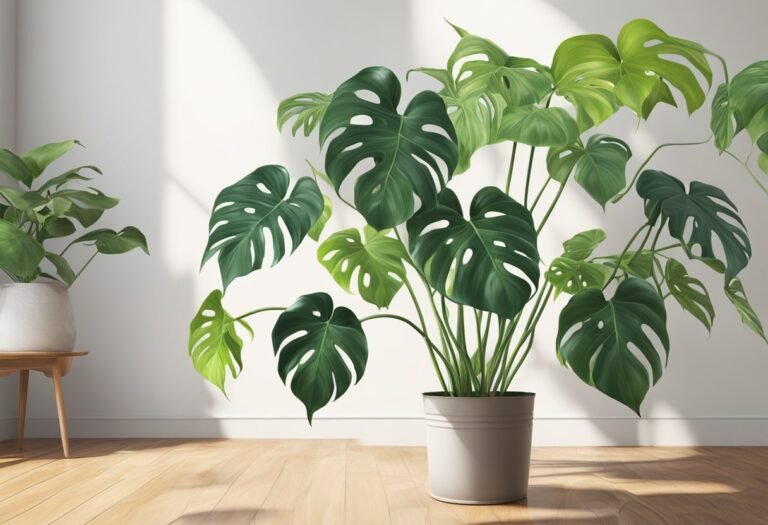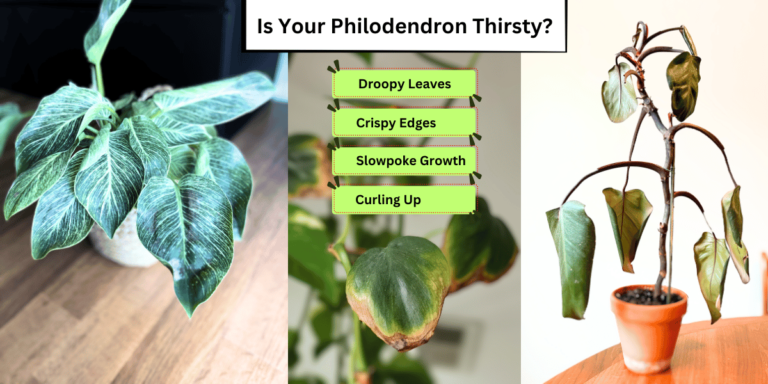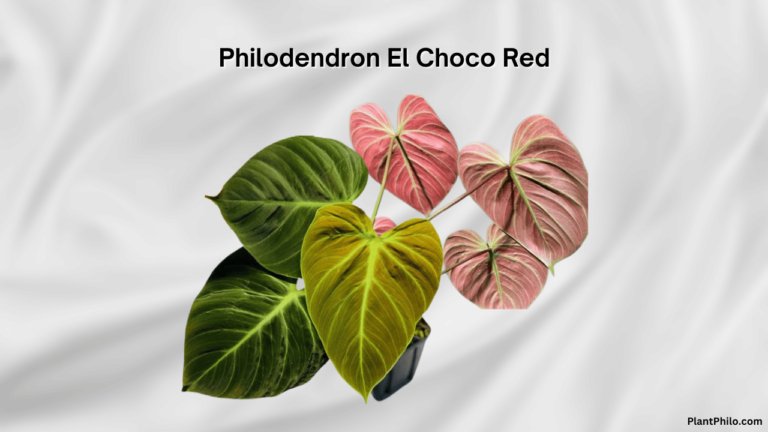Micans Climbing Information on Philodendron: Expert Guidance for Optimal Growth
If you’ve ever admired the lush, velvet leaves of a Philodendron micans, you might wonder what makes this plant thrive and show off its best growth.
Philodendron micans is a natural climbing plant that grows healthier and often develops larger leaves when allowed to climb.
In the wild, micans use aerial roots to attach themselves to trees and climb towards sunlight, which helps them grow strong and stable.

When I give my micans something to climb, like a moss pole or a piece of wood, I notice it looks much happier and more vibrant.
With the right support, this plant quickly starts to root onto the pole and becomes even more attractive as a houseplant.
Supporting micans in this way also makes care simpler, since the plant becomes less leggy and more controlled.
Understanding how climbing affects the health and look of Philodendron micans can help anyone enjoy a fuller, healthier plant at home.
For more details on this growth habit, you can read about the micans’ natural climbing tendencies at Gardenia.
Essential Micans Climbing Information

I always notice how Philodendron micans thrive when their climbing needs are met.
Whether I use a moss pole or another support, these plants show stronger growth and fuller leaves with proper care.
Natural Climbing Habits of Philodendron micans
In nature, Philodendron micans use aerial roots to climb up trees and other surfaces.
The plant’s vines naturally reach for anything they can attach to.
As a result, the leaves tend to get bigger and more vibrant the higher and healthier the vines grow.
When I provide climbing support at home, I see the same behavior.
Without a support, the micans will trail and sometimes lose leaf size or color.
Giving the plant something to grasp helps it mimic its wild habitat.
According to Gardenia’s guide, this allows the plant to grow faster and appear fuller.
Types of Support Structures
There are several ways to support the vines of Philodendron micans:
- Moss poles: These offer a natural texture and keep humidity near the roots.
- Coco coir poles: Made from coconut husks, these hold moisture well.
- Trellises: Great for wider displays and controlling the direction of vining.
- Simple sticks or stakes: Easy to use and fit in smaller pots.
I find that moss and coco coir poles are best for supporting healthy growth and encouraging aerial root attachment.
A pole also helps to stabilize the plant, especially as it gets bigger and heavier.
Some growers, as discussed in this Reddit post, report that their micans grow sturdier and fuller when given a pole to climb.
Training Techniques for Vining
To train Philodendron micans to climb, I gently guide the vines and secure them using soft plant ties or clips.
Using ties loosely is key—I avoid damaging the delicate stems.
I usually start by placing the main vine near the support and gently winding it upward.
When new growth appears, I tie these shoots as needed.
Mist the pole or support regularly to promote strong aerial root growth, especially if using moss or coir poles.
Trimming back any leggy or weak vines can also encourage more compact growth.
Training takes regular attention, but the results include larger, lusher leaves and a healthier plant overall.
Common Challenges in Climbing
Philodendron micans sometimes face problems when climbing.
The most common issue I see is weak attachment.
If the support is too dry, roots struggle to grip.
Keeping moss poles or coir moist helps solve this problem.
Another challenge is overhandling.
Repeatedly moving or tying vines too tightly can snap or damage stems.
I try to be gentle and check my ties every few weeks.
If the plant doesn’t get enough light, vines may stretch and get sparse, leading to smaller leaves.
Providing bright, indirect light helps maintain strong, healthy growth.
Proper watering and humidity are also important, as too little can dry out roots and too much can cause rot.
By watching for these issues, I can quickly adjust my care to keep my micans climbing and healthy.
Optimal Growing Conditions for Climbing

I have found that Philodendron micans climbs best when certain growing needs are carefully managed.
To help my plant thrive, I make sure the lighting, soil, temperature, and humidity all match its natural habitat as closely as possible.
Light Requirements for Vining
For strong, healthy vines, my Philodendron micans needs bright but indirect sunlight.
Direct sunlight can scorch its delicate leaves, so I keep it near a window with filtered light or use a sheer curtain to soften the rays.
Artificial grow lights with a brightness of 1,000 to 2,000 foot-candles also work well if my space doesn’t get enough natural light.
In low-light conditions, my plant tends to stretch or become leggy, which makes the vines thin and less attractive.
At least 3 to 4 hours of bright, indirect light each day encourages richer coloring and steady growth, making it easier for my micans to climb well.
For more, I refer to information on the best light for Philodendron micans.
Soil Composition and Moisture
My Philodendron micans needs soil that drains well but also holds some moisture.
I use a mix that is peat-based with extra perlite or orchid bark added for improved drainage.
This setup keeps roots healthy and reduces the risk of root rot.
The soil should feel slightly damp but never soggy.
I check the top inch with my finger and water only when it feels dry.
Consistent but not excessive watering helps avoid both underwatering and overwatering problems.
I make sure the soil pH is slightly acidic to neutral, usually between 5.5 and 7.0.
This creates the healthiest root system and lets my plant absorb nutrients efficiently.
Details on potting mix and moisture preferences are useful for fine-tuning my approach.
Temperature and Humidity Preferences
My Philodendron micans climbs and grows best when daytime temperatures are kept between 65°F and 80°F (18°C to 27°C).
Cold drafts or temperatures below 60°F (16°C) can slow growth and damage the plant.
Humidity is another key part of the climbing environment.
I try to keep humidity levels above 50%, but the plant thrives even more at 60% or higher.
Using a humidifier or grouping my micans with other plants helps raise humidity around it.
Strong airflow is helpful too, as it keeps leaves dry and reduces the risk of fungal problems.
If you want more details on temperature and humidity for Philodendron micans, there are guides that explain how to get these settings just right.
Maintenance and Care of Climbing Micans
I focus on careful pruning, feeding, and keeping pests under control so my climbing Philodendron Micans stays healthy.
Routine attention to these areas helps the plant thrive and hold on to its velvet look.
Pruning and Shaping
I prune my Philodendron Micans to keep its vines from getting too long and untidy.
I use sharp, clean scissors or pruning shears.
I make cuts just above a leaf node so the plant can keep growing from that spot.
If I see leggy or yellowing stems, I remove them to keep the plant full and healthy.
I also encourage bushier growth by pinching back the long ends.
This makes the plant put out more side branches.
When my micans climbs, I tie the stems loosely to a moss pole or trellis for support.
It’s important not to tie the stems too tight, so they don’t get damaged.
Micans can be shaped easily.
If I want bushier leaves at the top, I trim the top growth.
For more trailing vines, I let some stems grow longer.
Pruning regularly keeps the plant’s shape what I want.
Fertilization Guidelines
For the best growth, I fertilize my climbing Philodendron Micans during the growing season, from spring through early fall.
Every 4-6 weeks, I use a balanced, water-soluble fertilizer at half strength.
I always water the plant before fertilizing to avoid root burn.
I avoid over-fertilizing, since too much can lead to weak, leggy growth and can cause salt buildup in the soil.
In winter, I pause fertilizing as the plant’s growth slows down.
If leaves look pale or slow to grow, it often means the plant needs a little more food.
A simple schedule like this keeps my micans looking lush and green.
I always follow the instructions on the fertilizer label for safety.
For more tips on velvet-leaf Philodendron care, I check trusted gardening websites.
Pest and Disease Management
I check my climbing micans every week for pests like spider mites, aphids, and mealybugs.
These pests can be found on the undersides of leaves or along stems.
If I spot them, I wipe leaves with a damp cloth or spray with insecticidal soap.
To prevent disease, I make sure air flows around the plant and avoid letting water sit on the leaves.
I only water when the top inch of soil feels dry, which keeps root rot and fungus away.
Clean tools help me stop spreading any disease from plant to plant.
If my micans develops brown spots or yellowing, I act quickly by pruning affected leaves and checking my watering routine.
Healthy, well-cared-for micans are less likely to get sick or attract pests.
For more detailed care information, I reference expert care guides.
Frequently Asked Questions
I often get questions about propagating, caring for, and choosing the best support for Philodendron micans.
My responses focus on clear steps and simple guidelines that help keep these tropical vines healthy.
How can one propagate Philodendron micans effectively?
I use stem cuttings with at least one node and a couple of leaves.
Placing the cuttings in water or moist soil encourages root growth.
It usually takes a few weeks for roots to develop, but I keep the humidity high and avoid direct sunlight for best results.
What is the ideal care routine for Philodendron micans?
I water my Philodendron micans when the top inch of soil feels dry.
The plant needs bright, indirect light and a well-draining potting mix.
I also fertilize lightly during spring and summer to encourage healthy growth.
Which support structure is best for Philodendron micans to encourage climbing?
A moss pole works especially well for climbing Philodendron micans.
I find the aerial roots attach easily to the moist surface, allowing the vines to grow upright and remain stable.
You can see more about support structures for climbing in this discussion about climbing preferences.
Are there variegated varieties of Philodendron micans?
I have not seen any widely available variegated forms of Philodendron micans.
Most plants on the market are the classic deep green and bronze with velvety leaves.
Any unusual markings are rare and not stable.
What should be done if Philodendron micans leaves begin to turn red?
I check light levels right away, as too much direct sunlight can cause red coloring.
If that happens, I move the plant to a spot with filtered light.
Sometimes, a slight red tint is normal in new growth, but persistent redness may signal stress.
Can you compare Philodendron micans to other velvet leaf philodendron varieties?
Compared to other velvet leaf types, such as Philodendron ‘Brasil’ or Philodendron gloriosum, my Philodendron micans has smaller, heart-shaped leaves and prefers to trail or climb.
The leaf texture is especially soft and velvety, with a bronze-green color that sets it apart.





